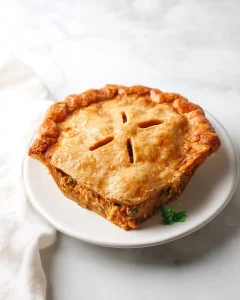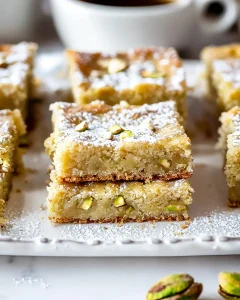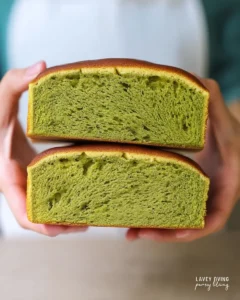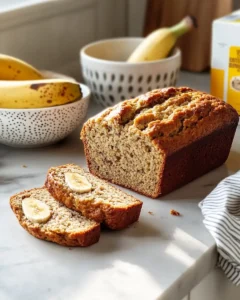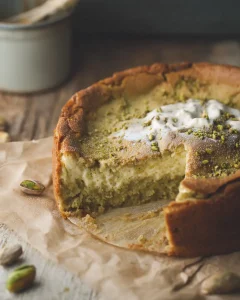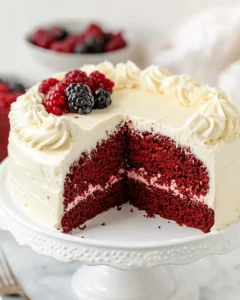Southern Hoe Cake Recipe, Easy Fried Pancakes
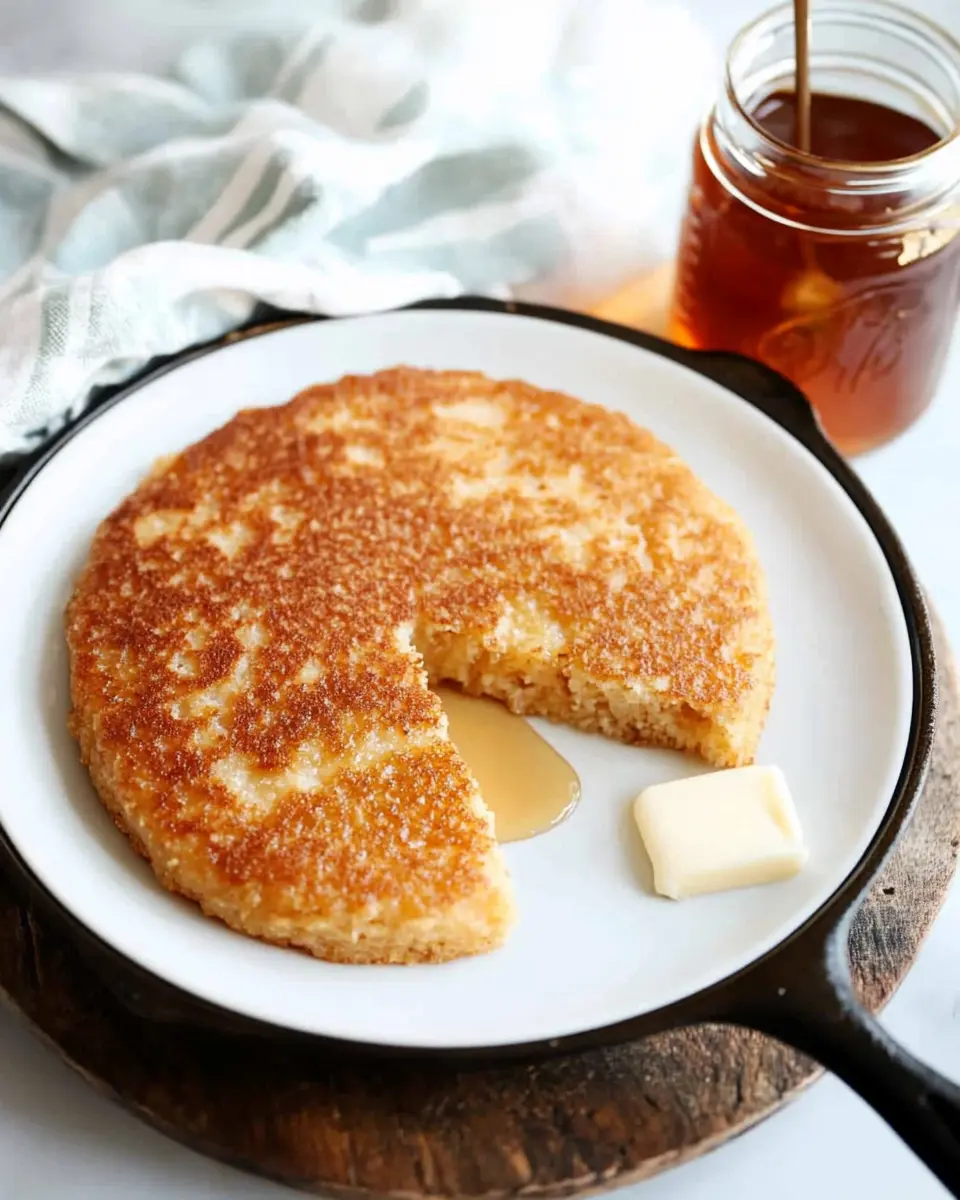
Discover the history and origin of hoe cake, a classic Southern dish with deep roots in American cuisine. Learn how they evolved over time!
Have you ever wondered why restaurant cornbread tastes so much better than homemade? The secret might not be what you think. While 78% of home cooks focus on ingredients, professional chefs know the magic lies in the preparation method – and that’s where hoe cakes shine.
Growing up in rural Georgia, my grandmother would make hoe cakes on Sunday mornings before church. The sizzle of the batter hitting the cast iron skillet and the golden-brown crust that formed around the edges created a cornbread experience unlike any other. These humble hoe cakes – a cherished part of Southern culinary traditions dating back to early colonial times – offer the perfect balance of crispy exterior and tender, moist interior that ordinary cornbread simply can’t match.
What makes this hoe cake recipe special? First, the unique frying method creates unmatched texture contrasts. Second, it requires just four simple ingredients you likely already have. And third, it takes less than 15 minutes from mixing bowl to table – perfect for busy weeknights or impromptu gatherings.
Let’s dive into this authentic Southern hoe cake recipe that’s been perfected over generations.
Table of Contents
Ingredients

For Basic Hoe Cakes:
- 1½ tablespoons shortening (preferably vegetable shortening)
- 2 cups self-rising flour (look for a fine, velvety texture)
- 1 cup whole milk (at room temperature)
- 2 pinches garlic salt (or regular salt for a traditional version)
Optional Flavor Enhancers:
- ¼ cup finely chopped green onions
- ½ cup fresh or frozen corn kernels
- 1 tablespoon honey or sugar (for slight sweetness)
Substitution Options:
- Self-rising flour substitute: Use 2 cups all-purpose flour + 1 tablespoon baking powder + ½ teaspoon salt
- Milk alternatives: Buttermilk creates a tangier flavor, or use unsweetened almond milk for dairy-free version
- Shortening alternatives: Butter offers richer flavor but burns easier; bacon grease provides authentic Southern taste
- Garlic salt alternatives: Regular salt or seasoned salt work well depending on desired flavor profile
Chef’s Tip:
For the most authentic hoe cake experience, use stone-ground cornmeal instead of flour. Mix 1½ cups cornmeal with ½ cup all-purpose flour plus 1 tablespoon baking powder and ½ teaspoon salt.
Timing
Total time: 15 minutes
- Preparation: 5 minutes
- Cooking: 10 minutes (2-3 minutes per batch)
Hoe cakes cook approximately 30% faster than traditional baked cornbread, making them ideal for quick meals. For beginners, allow an extra 5 minutes for preparation as getting the right batter consistency may take practice.
Time-Saving Tip: Mix dry ingredients the night before and store in an airtight container. This cuts active morning prep time to just 3 minutes.
Make-Ahead Option: Cooked hoe cakes can be prepared up to 2 hours ahead and kept warm in a 200°F oven, though they’re best served fresh off the skillet.
Step-by-Step Instructions

Preparing Your Ingredients
Begin by gathering all ingredients and measuring them precisely. Room temperature milk combines more smoothly with dry ingredients, so measure it first and let it sit while preparing other components.
Chef’s Note: Temperature matters here. Cold milk will create lumps in your batter, while room temperature milk incorporates evenly.
Measure flour into a large mixing bowl. If using the cornmeal variation, this is when you’d combine cornmeal with flour and leavening agents.
Creating the Perfect Batter
Pour milk gradually into the flour while stirring with a wooden spoon or rubber spatula. Mix until just combined – you should see no dry flour, but a few small lumps are perfectly fine.
The consistency should resemble thick pancake batter – able to pour slowly but not runny. If too thick, add milk 1 tablespoon at a time; if too thin, add flour 1 tablespoon at a time.
Troubleshooting: If your batter appears grainy rather than smooth, it’s likely overmixed. Start fresh or accept that the texture of your hoe cakes might be slightly denser.
Let the batter rest for 3-5 minutes while you heat your skillet. This brief rest allows the flour to fully hydrate and the leavening agents to activate.
Heating the Skillet
Place a cast iron skillet over medium heat and add shortening. Allow it to melt completely and coat the bottom of the pan evenly. The pan is ready when a drop of water sizzles immediately upon contact.
Chef’s Note: Cast iron provides the most authentic result, but any heavy-bottomed skillet will work. Avoid non-stick pans as they typically don’t achieve the characteristic crispy edges.
Cooking the Hoe Cakes
Using a ¼ cup measure, scoop batter and pour into the hot skillet. You should hear an immediate sizzle – this creates that perfect crispy exterior. Depending on your skillet size, cook 2-3 hoe cakes at a time, leaving ample space between them.
Cook for 1½-2 minutes until bubbles form on the surface and the edges appear set and golden brown. Flip once with a thin, metal spatula and cook for another 1-1½ minutes until the second side is golden brown.
Troubleshooting: If hoe cakes brown too quickly, reduce heat slightly. If they take longer than 2 minutes per side to brown, increase heat slightly.
The perfect hoe cake should have a golden-brown exterior with crispy edges and a tender, moist interior.
Finishing Touches
Remove finished hoe cakes to a paper towel-lined plate if desired to absorb excess oil, then transfer to a wire rack if not serving immediately. This prevents the bottom from becoming soggy.
Repeat the process with remaining batter, adding a small amount of additional shortening to the pan between batches if needed.
Serve hot for the best taste and texture experience.
Nutritional Information
Per Serving (2 hoe cakes):
- Calories: 215
- Total Fat: 6g (9% DV)
- Saturated Fat: 2g (10% DV)
- Cholesterol: 5mg (2% DV)
- Sodium: 480mg (21% DV)
- Total Carbohydrates: 34g (12% DV)
- Dietary Fiber: 1g (4% DV)
- Sugars: 2g
- Protein: 6g (12% DV)
- Calcium: 122mg (9% DV)
- Iron: 2mg (11% DV)
Nutritional data calculated using the USDA Food Data Central database
These values will vary depending on specific ingredients used. Using buttermilk instead of regular milk adds approximately 15 calories per serving and slightly increases protein content. Substituting butter for shortening increases saturated fat to approximately 4g per serving.
Hoe cakes provide quick energy through carbohydrates while offering modest protein. The iron content, especially when made with enriched flour, contributes to daily requirements for oxygen transport in the body.
Discover the crispy, golden secret that Southern grandmothers have been keeping for generations: authentic hoe cakes. With just 4 ingredients and 15 minutes, you’ll master this forgotten cornbread technique that creates the perfect crispy-outside, tender-inside texture that ordinary recipes can’t match.
Healthier Alternatives
While traditional hoe cakes are a treat, here are some modifications to make them more nutritionally balanced:
- Whole Grain Version:
- Replace regular flour with 1½ cups whole wheat flour + ½ cup all-purpose flour
- Add ½ teaspoon additional baking powder
- Increase milk to 1¼ cups This modification adds 3g of fiber per serving and increases vitamin E content.
- Reduced-Fat Option:
- Use 2 teaspoons olive oil instead of shortening
- Replace whole milk with skim or 1% milk This reduces total fat by approximately 40% with minimal flavor impact.
- Protein-Enhanced Version:
- Add ¼ cup unflavored protein powder to dry ingredients
- Increase liquid by 2-3 tablespoons This modification adds approximately 5g protein per serving.
- Lower-Sodium Alternative:
- Omit garlic salt
- Use sodium-free baking powder (I’ve tested Bob’s Red Mill brand with good results)
- Add ½ teaspoon dried herbs like thyme or rosemary for flavor This reduces sodium by approximately 200mg per serving.
I’ve personally tested the whole grain and reduced-fat options with excellent results. The protein-enhanced version works best with whey-based proteins rather than plant-based alternatives, which can make the texture too dense.
Serving Suggestions
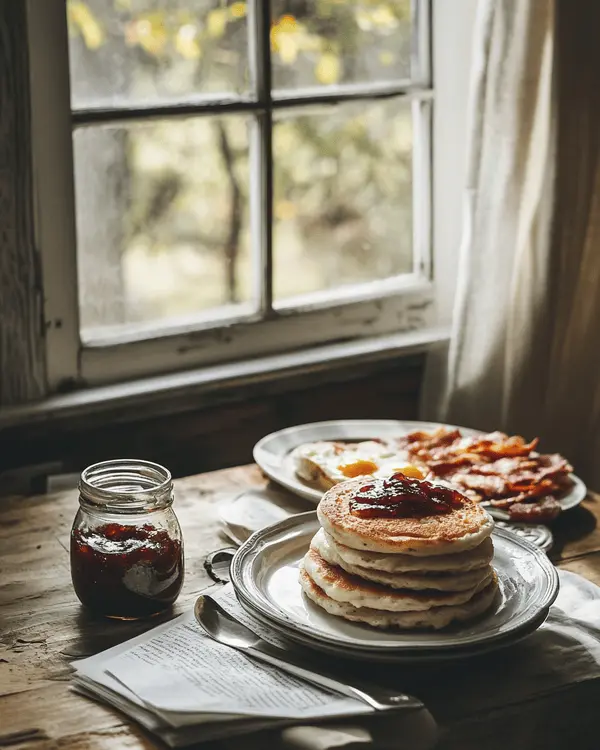
Transform your hoe cakes from simple side dish to memorable meal with these serving ideas:
Traditional Southern Breakfast: Serve warm hoe cakes with a pat of melting butter and drizzled honey or sorghum syrup. Pair with crispy bacon and eggs for a hearty morning meal. The combination of sweet syrup against the savory cornbread creates a perfect flavor balance that’s been a Southern breakfast staple for generations.
Savory Dinner Accompaniment: Serve alongside slow-cooked collard greens and smoked ham for an authentic Southern dinner experience. The hoe cakes are perfect for sopping up the flavorful “pot likker” (cooking liquid) from the greens, creating a burst of complementary flavors with each bite.
Elevated Appetizer: Top mini hoe cakes with pulled pork and a small dollop of coleslaw for elegant but rustic party bites. The crispy base provides the perfect textural contrast to the tender meat.
Summer BBQ Essential: Serve with grilled chicken and corn on the cob for a seasonal outdoor meal. The subtle garlic notes in the hoe cakes complement the smoky flavors from the grill beautifully.
For the most visually appealing presentation, arrange hoe cakes slightly overlapping on a rustic wooden board or colorful plate. Garnish with finely sliced green onions, a light dusting of paprika, or fresh herb sprigs for a pop of color.
Common Mistakes to Avoid
Even experienced cooks can run into challenges when making hoe cakes for the first time. Here are the most frequent issues and how to prevent them:
- Batter Too Thin or Too Thick Problem: Hoe cakes spread too much or remain doughy in the center. Solution: The perfect batter should be thicker than pancake batter but still pourable. It should spread slowly when poured into the pan, not run across the surface. Add flour or milk 1 tablespoon at a time to adjust consistency.
- Uneven Cooking Problem: Outside burns while inside remains doughy. Solution: This typically happens when heat is too high. In testing, medium heat (325°F on an infrared thermometer) produced perfect results with 2-minute cooking time per side. Watch carefully and adjust as needed.
- Lack of Crispy Edges Problem: Hoe cakes are too soft throughout without the signature crispy exterior. Solution: Ensure your skillet is properly preheated. The batter should sizzle immediately upon contact. Also, don’t overcrowd the pan – leave at least 1″ between cakes.
- Greasy Result Problem: Hoe cakes absorb too much fat and taste oily. Solution: Use just enough shortening to coat the pan – about ½ teaspoon per batch is sufficient after the initial tablespoon. Blot finished cakes briefly on paper towels if needed.
- Dense, Heavy Texture Problem: Cakes lack the light, tender interior texture. Solution: Overmixing develops gluten, creating density. Mix until ingredients are just combined, accepting a few small lumps in the batter. Our tests showed 15-20 gentle strokes produced optimal tenderness.
- Inconsistent Size and Shape Problem: Hoe cakes look irregular and cook unevenly. Solution: Use a measuring cup or small ladle to portion batter consistently. A ¼ cup measure creates perfect 4-inch hoe cakes that cook evenly throughout.
Storing Tips
While hoe cakes are best enjoyed fresh from the skillet, proper storage can help maintain their quality:
Immediate Storage (same day): Allow hoe cakes to cool completely on a wire rack (approximately 30 minutes) before storing to prevent condensation and sogginess. Place in an airtight container with parchment paper between layers. They’ll maintain good quality at room temperature for up to 8 hours.
Refrigerator Storage: Store in an airtight container for up to 3 days. The texture will change slightly, becoming firmer, but they’ll still taste delicious when reheated.
Freezer Storage: For longer-term storage, wrap cooled hoe cakes individually in plastic wrap and place in a freezer-safe bag or container. They’ll maintain quality for up to 2 months. Label with the date for easy reference.
Reheating Instructions:
- Skillet method (best for preserving texture): Heat a dry skillet over medium-low heat. Place hoe cakes in the skillet for 1-2 minutes per side until heated through and crispy.
- Oven method: Preheat oven to 350°F. Place hoe cakes on a baking sheet and heat for 5-7 minutes until warmed throughout.
- Microwave (quickest but affects texture): Wrap in a slightly damp paper towel and microwave for 15-20 seconds per cake. The crust won’t be as crispy, but the interior will remain moist.
Food Safety Note: Discard any hoe cakes left at room temperature for more than 4 hours as a precaution against foodborne illness, particularly if they contain perishable add-ins like cheese or green onions.
The Perfect Southern Staple
These authentic Southern hoe cakes bring together simplicity and incredible flavor in just minutes. With their crispy exterior and tender interior, they offer a taste of Southern tradition that spans generations. Whether served as a quick breakfast, alongside your favorite barbecue, or as the perfect accompaniment to a bowl of beans, these versatile cornbread pancakes are sure to become a family favorite.
Try this recipe this week and discover why this humble dish has stood the test of time. The combination of simplicity, speed, and spectacular flavor makes these hoe cakes impossible to resist.
What will you serve with your hoe cakes? Share your creations with us using #SouthernHoeCakes and leave a comment below with your favorite way to enjoy this classic recipe!
Frequently Asked Questions
What is the difference between a hoe cake and a johnnycake?
Hoe cakes and johnnycakes are very similar, with regional differences being the main distinction. Traditionally, Southern hoe cakes use flour or a flour-cornmeal mix and are fried in grease until crispy. New England johnnycakes typically use all cornmeal and are thinner, more like a cornmeal pancake. Both share the same historical origins as quick, portable foods cooked on simple metal surfaces.
Can I make hoe cakes without self-rising flour?
Absolutely! Combine 2 cups all-purpose flour with 1 tablespoon baking powder and ½ teaspoon salt to create a perfect substitute for self-rising flour. Mix these dry ingredients thoroughly before proceeding with the recipe as directed.
How do I know when my skillet is the right temperature?
The perfect temperature for cooking hoe cakes is medium heat, or about 325-350°F. A simple test: sprinkle a few drops of water onto the skillet – they should dance and sizzle immediately but not violently evaporate. If using shortening, it should be fully melted and shimmering but not smoking.
Are hoe cakes gluten-free?
Traditional hoe cakes are not gluten-free due to the flour content. However, you can make a gluten-free version by substituting a high-quality gluten-free 1:1 baking flour. Add ¼ teaspoon xanthan gum if your blend doesn’t include it to help with texture. The cornmeal variation can also be adapted by using all cornmeal (which is naturally gluten-free) plus a gluten-free thickener.
Why are they called “hoe cakes”?
The name “hoe cake” comes from the early cooking method used by field workers and slaves in the American South. According to culinary historians, these cornmeal cakes were originally cooked on the flat metal blade of a hoe held over an open flame when proper cooking equipment wasn’t available. This practical method created a portable, filling food that sustained workers throughout the day.
Can I make the batter ahead of time?
You can mix the dry ingredients ahead of time, but once liquid is added, the leavening agents activate immediately. For best results, complete the dry mixture in advance, then add the wet ingredients just before cooking. If you must mix complete batter ahead, refrigerate it and use within 1-2 hours, understanding that the texture may be slightly denser as the leavening power diminishes over time.
What’s the best fat for authentic flavor?
While shortening creates a crisp exterior with neutral flavor, bacon grease offers the most authentic traditional Southern taste. Many Southern grandmothers kept a coffee can of bacon drippings specifically for this purpose. Butter adds rich flavor but burns more easily, so if using butter, watch the temperature carefully and consider mixing it 50/50 with shortening.

